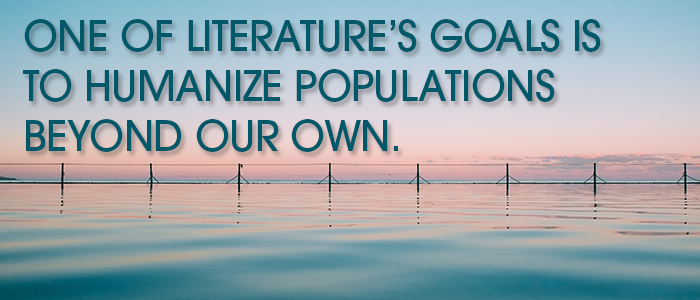How to Make Your Literary Magazine More Inclusive
Marlena Chertock | October 2017

“Editors will always be walling someone out,” said Editor in Chief of Wordgathering Michael Northen on a panel at AWP 2017. Creating a more inclusive journal is one of the biggest challenges editors face. The issue is inherent in their role as gatekeepers.
There is innate privilege in serving as an editor of a literary magazine. Editors and their staff read through so-called “slush piles” of submissions, sometimes soliciting so much work those piles don’t get touched for months, judge poetry and prose on various and oftentimes ambiguous qualifications of merit, and decide what and who gets published.
One of literature’s goals is to humanize populations beyond our own. If editors are not publishing or reading writing that challenges them and us to be more empathetic and engaged, if only certain voices dominate the literary landscape, we are doing something wrong in publishing.
It is a constant struggle as an editor to step back and think about biases when you’re reading submissions. If they have been called out for publishing ableist writing or a lack of diversity—like, for example, Rattle’s issue on NYC that included all white poets—editors have a duty to listen. To respond. To do their best to improve.
So how can editors address these privileges and do their part to make their journals and the literary community at large more inclusive and representative?
At AWP 2017, a group of disabled editors or editors of disability literature—Marlena Chertock, Poetry Editor of District Lit; Jill Khoury, Editor of Rogue Agent; Sheila McMullin, on the Board of Directors of VIDA; Mike Northen, Editor in Chief of Wordgathering; and Sheryl Rivett, Editor at Youshare—offered ideas for making the literary community more inclusive.
First, ensure your journal and submission process is fully accessible. For instance, Submittable remains inaccessible for people who use screen readers. One option is to allow email submissions if your submission platform is inaccessible. Also, offer audio versions of text, image descriptions, and large-format for increased accessibility. Listen when writers point out barriers, and remain flexible in how to make improvements.
Second, more journals should feature voices of disabled writers, writers of color, queer writers, and others who have historically been and continue to be marginalized. For example, Wordgathering has published disability literature for ten years. Recently, many journals have been founded by and for marginalized writers.
Third, ask if writers can find safe spaces for their work in your journals. Take a long, hard look at magazine mastheads. Does everyone look the same? Are there diverse ages, races, genders, sexual identities, abilities, and more? If not, why? Editors should be hiring diverse candidates as their interns, readers, and editors. For example, peruse the @writersofcolor Twitter feed and website to find writers of color.
Fourth, editors can consider guest judges as a way to bring in different gatekeepers. This can provide alternative points of views on the quality and diversity of submissions.
Fifth, let diverse writers know you want their work. Editors have been doing this through submission guidelines, manifestos, mission statements, editor’s notes, essays, or even through conversations on social media. There are many places where writers and editors discuss inclusive, representative, diverse literature, including: #blacklit, #criplit, #indigenouslit, #latinowriters, #ownvoices, #queerlit, We Need Diverse Books, and more. Involve your journal in Twitter chats or find the method that seems the most sincere for you. Try different techniques.
Sixth, produce themed issues surrounding certain voices, identities, or political/social movements. For example, in February 2017, District Lit held a call for submissions focused on disability and illness. While the magazine is always open to work from writers with disabilities, this themed issue was a clear way to highlight writing about living with disabilities and chronic illness, and to let writers know that their work and voices are wanted. Special themed issues can seem alienating, so it’s important to let writers know your publication is open to their writing at all times, if, in fact, it is.
Seventh, editors and writers must be brave. Small, positive shifts can have big consequences.
Creating inclusive spaces in the (web)pages of your journals is a never-ending journey. It doesn’t stop after hiring diverse editors or publishing one diverse themed issue. Editors must constantly expand the definition of inclusivity, and continuously work to reach it.
Marlena Chertock has two books of poetry, Crumb-sized (Unnamed Press, 2017) and On that one-way trip to Mars (Bottlecap Press, 2016). She lives in Washington, DC and serves as the poetry editor of District Lit. Marlena is a graduate of the Jiménez-Porter Writers’ House and uses her skeletal dysplasia and chronic pain as a bridge to scientific poetry. Her poems and short stories have appeared or are forthcoming in Breath & Shadow, The Deaf Poets Society, The Fem, Paper Darts, Wordgathering, and more. Find her at marlenachertock.com or @mchertock.
